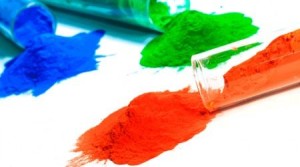
Colours and their various shades form an important aspect of domestic, commercial and industrial world. It is colours that enhance the aesthetic appeal of clothes, homes, food, offices, automobiles, cosmetics, waxes, paints, etc. They can also be used to offer a safety feature. There is great diversity in the demands of the market for colours depending on the area of application.
Some applications require bright colours, some need pastel shades and some others need lighter hues. Colours do make our world attractive and the key to achieving perfect shades is by fine tuning the absorption and emission properties of the dyes and pigments. There are various types of pigments and dyes in the market viz. Pthalocyanine pigments, vat dyes, lake colours and many more.
Pthalocyanine pigments manufacturers closely watch the quality of their pigments to ensure excellent light fastness, solvent fastness, chemical resistance, heat stability, neutral pH, etc. and this guarantees the durability and non-hazardousness of their products. Pthalocyanine pigments were first discovered while investigating a discoloration of pthalimide. During the process an extremely stable blue crystalline substance was found. This was a pthalocyanine pigment. Pigment blue, pigment green etc. are some examples of the Pthalocyanine pigments.
Coming to vat dyes, it is essentially a process of dyeing in a vat or bucket, hence the name. Fibre reactive dyes, acid dyes, etc. come under the category of vat dyes. They are used to colour wool, cotton and other fibres. Indigo is the original vat dye which turns from yellow to green in the vat and finally becomes blue when it comes in contact with air. Vat dyes manufacturers make these dyes by a redox reaction to give increased colour fastness than other dyes; however their rubbing fastness is less. Vat Red 10, Vat Violet 13, Vat Orange 1 are some examples of vat dyes.
Moving to lake colours, they find application in a wide range of industries such as cosmetics, pharmaceuticals, etc. They are pigments with wide array of colours. Lake colours are made by combining dyes with salts. They tint by the dispersion method. Lake food colours are more stable than food dyes. They are used to coat tablets, make cake mixes, lip sticks, soaps, shampoos, etc. They are highly adaptable making them stable. Lake Allura Red, Lake Amaranth, Lake Brilliant Blue FCF, Lake Quinoline Yellow are some of the commonly used lake colours.
Acid colours are classified into Levelling or strong colours, Milling or weak colours and Super milling or neutral colours. They are used in dyeing, printing, etc. Acid Red 88, Acid red 1 are a couple of examples of the same.
Considering the growing demands of the industry, it is essential that pigments and dyes are purchased from reputed manufacturers as they pay attention to selection of raw material, manufacturing process control, use of innovative technology, training, safety, etc. Evolving with market trends is the key to successful colouring solutions. These reputed names can effectively integrate customer needs, product ideas and technology to ensure complete customer satisfaction.